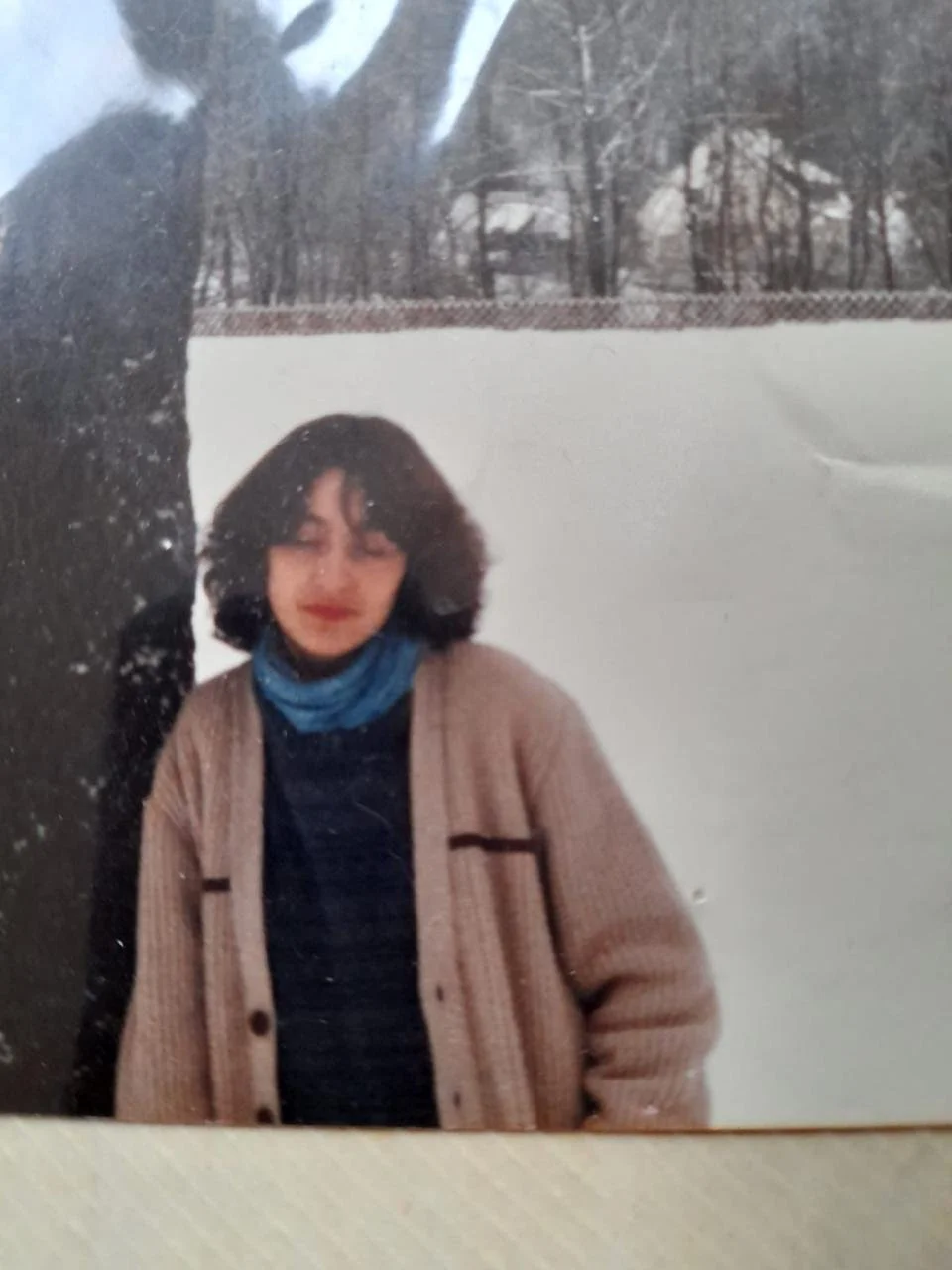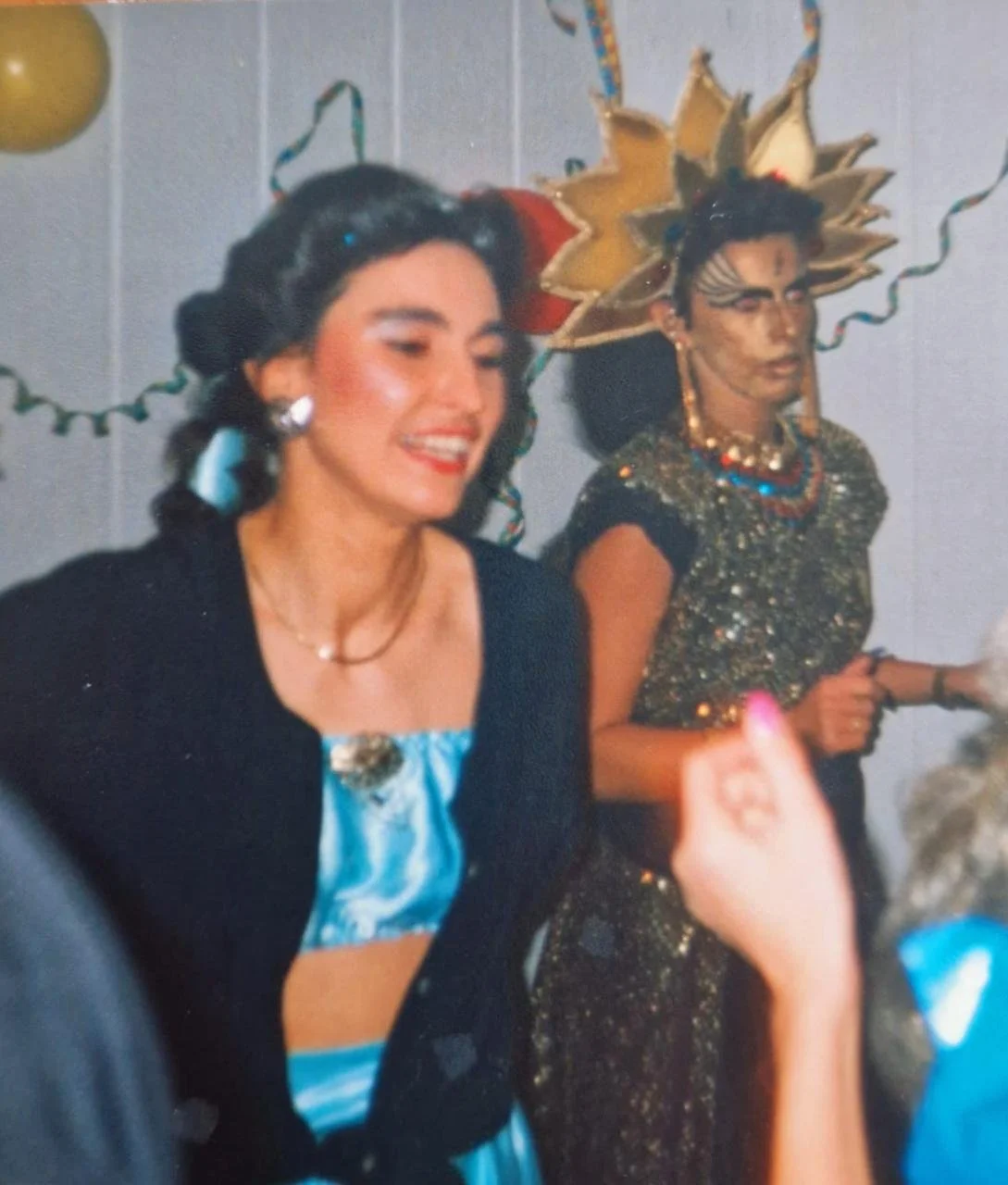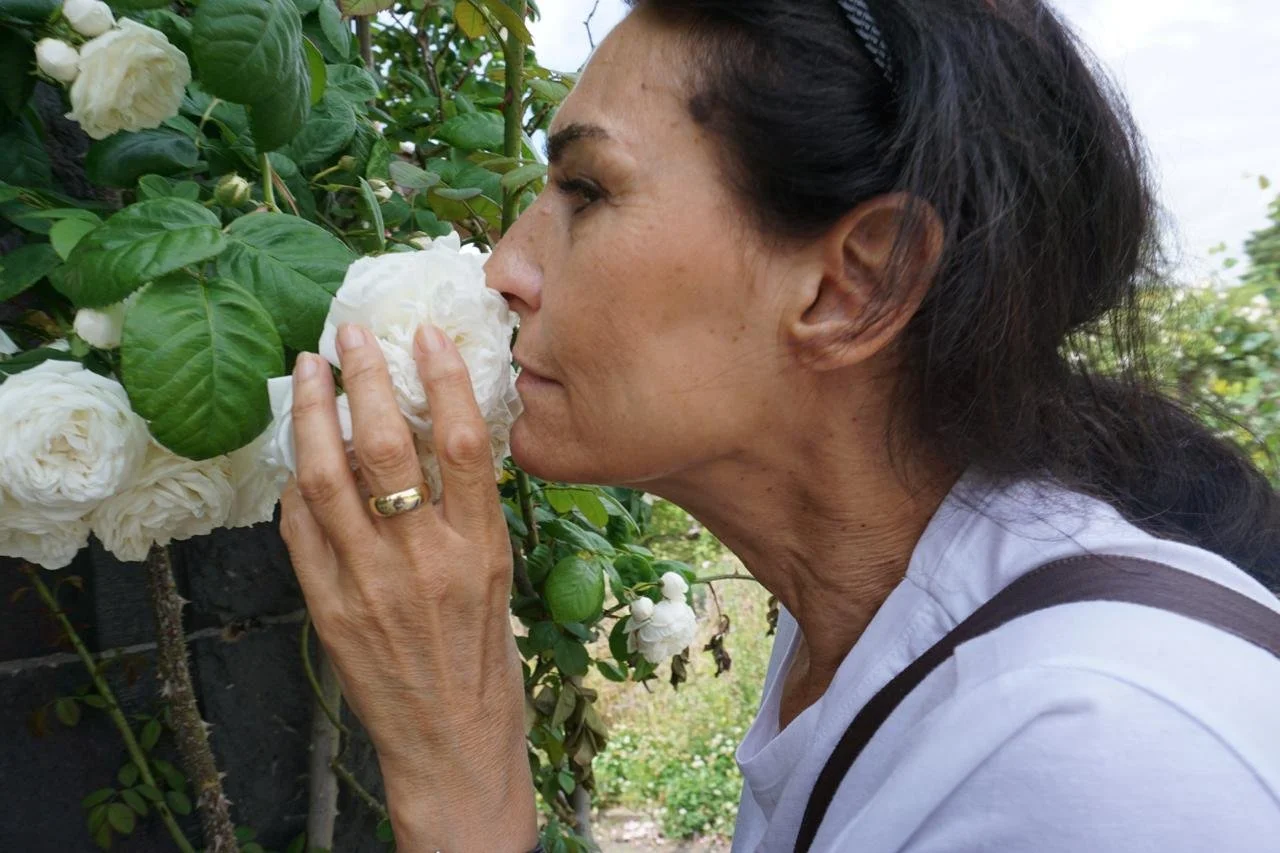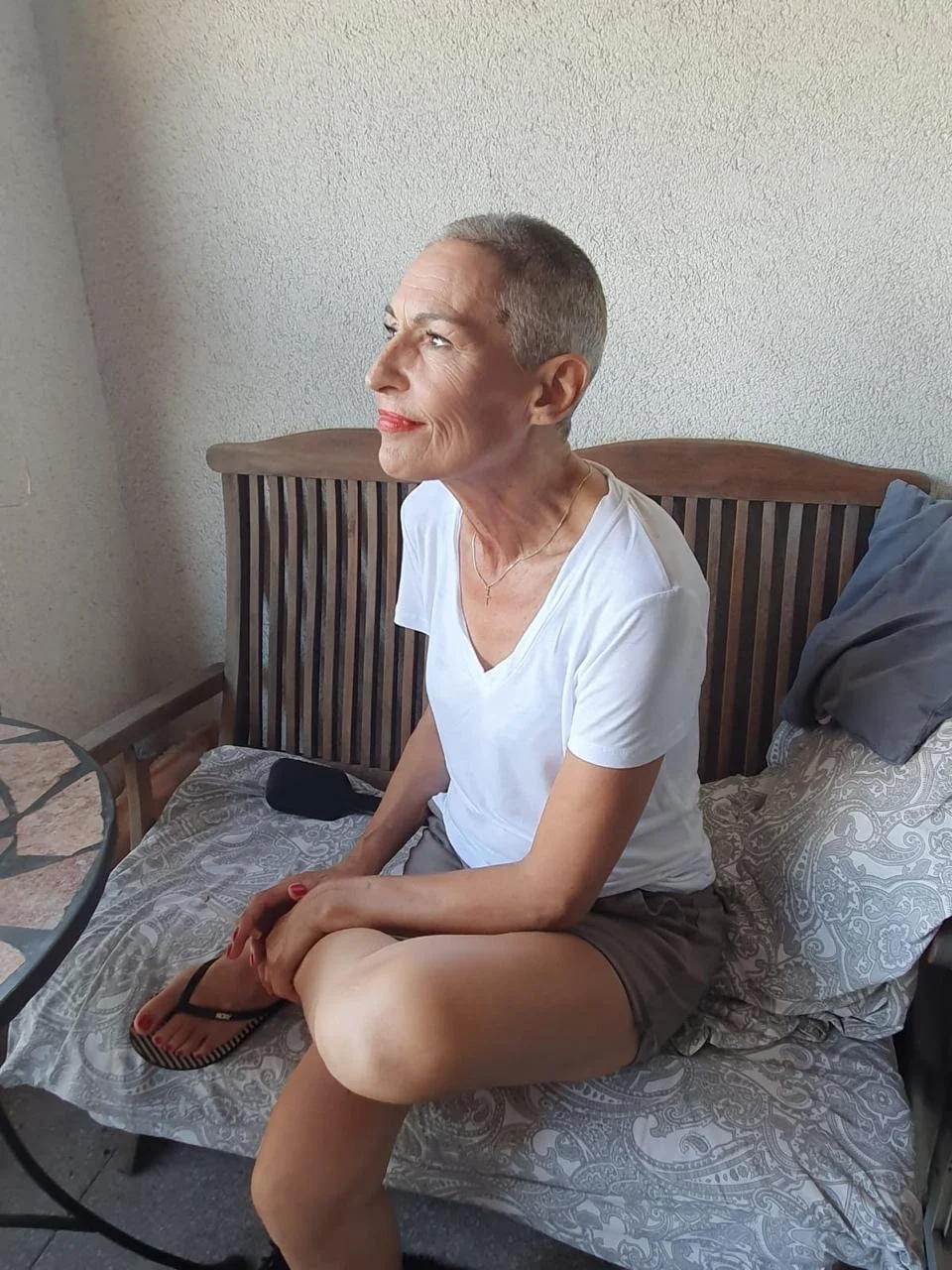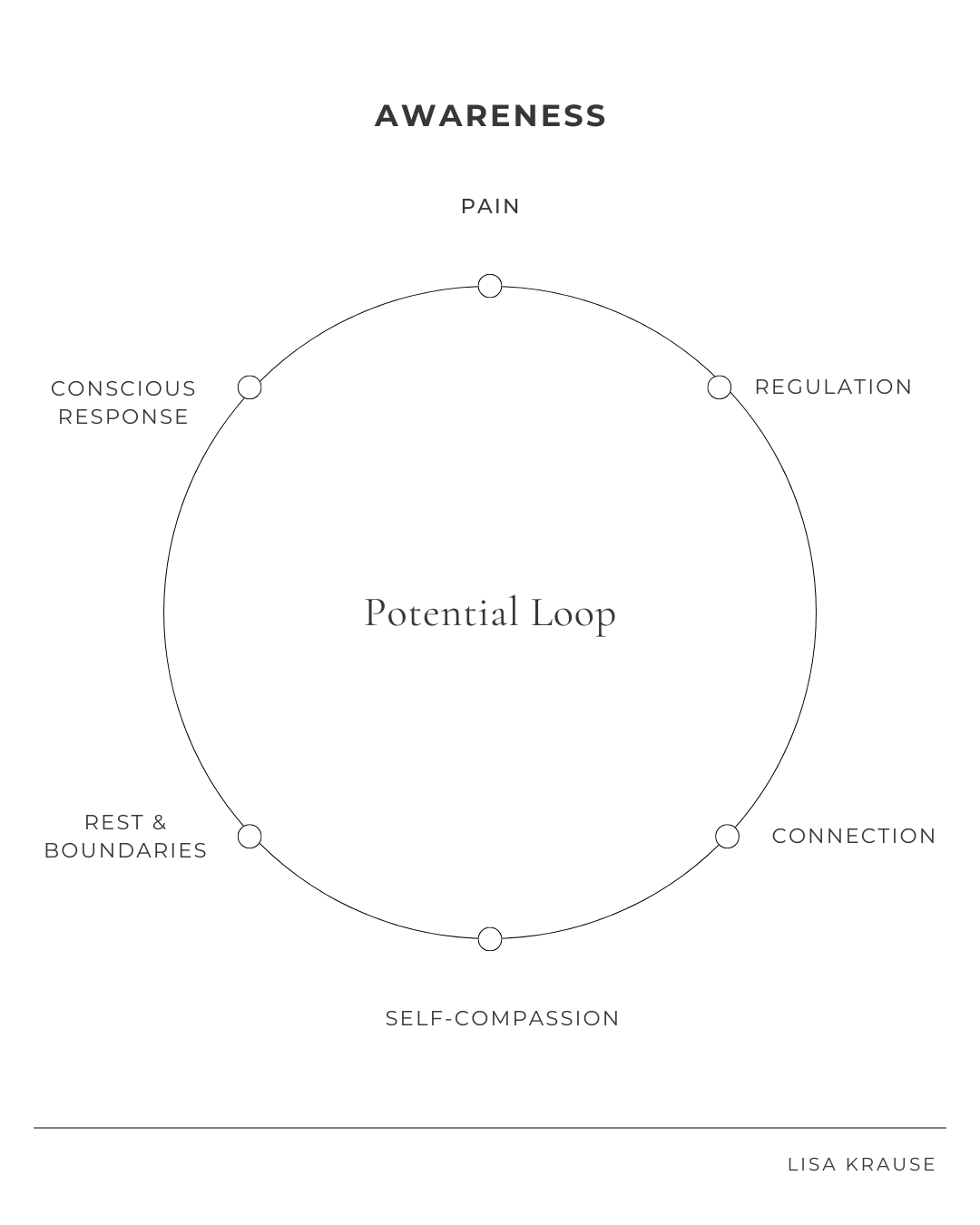Healing the Mother Within – A Personal Journey through Shame, Trauma, and Transformation
What happens when we suddenly recognize ourselves in our parents' behavior?
A personal essay about intergenerational cycles of pain, emotional patterns, the illusion of helplessness — and the power that lies in honest self-encounter.
Reading time: 13 min
When my partner Tillmann tells me,
“Gosh, Lisa, you’re just like your mother,”
he’s not talking about her generosity, kindness, her nurturing, or funny traits.
He’s pointing to her shadow side.
And as you might imagine, I wasn’t exactly thrilled to hear that.
In fact, he hit a nerve — big time.
There’s something about that part of her that’s always triggered me.
Now, hearing that I’m just like that?
It made me furious.
Every few weeks, my mom has what I call a “victim episode.”
She tells me how much she’s suffering, how terrible everything is.
And she says it so convincingly, with such vivid detail and emotion, that you may start to believe:
“Wow. This really is awful. Her situation seems helpless and unsolvable. Nothing can be done.”
And there it is — the part of her that seems to feed off the pain. The voice that puts suffering and helplessness on a pedestal:
“I’m miserable. And there’s nothing I can do. Nothing…”
When she calls or texts me in that state, I feel myself spiraling.
Any suggestion — no matter how gentle or loving — any step toward a solution only seems to make her feel worse.
In panic, she brings up another terrible thing — something that, from my point of view, often has nothing to do with what she mentioned before.
Eventually, I get pissed.
She feels even more misunderstood.
And now the peak of her misery is reached.
She’s not only suffering in a seemingly helpless situation —
she’s now suffering in that situation alone.
No one understands her and she feels completly isolated in her pain.
When the Truth Stings
A few weeks ago, I visited my best friend Birgit — and she said something Tillmann had been trying to tell me for years with his classic, “You’re just like your mother” attitude.
But Birgit doesn’t even know my mother. She wasn’t making a direct comparison, nor was she personally triggered. She simply reflected a pattern she saw — and that’s why it landed… differently.
After two days of me complaining about how tired and miserable I was, she finally said:
“Lisa, it’s okay to be tired and miserable. But complaining to me all day long about how tired and miserable you are isn’t going to help. I’m here for you, and I’m happy to spend these days doing chill things with you… but I can’t do anything about you feeling miserable and tired — it’s you who needs to take action. And whatever it is that you need to do to care for that miserable state — I’m totally fine doing that with you. But I’m not fine sitting next to you, listening over and over again to how miserable you are while you do nothing about it.”
I froze. For a split second, my mind rebelled:
“Can’t you see? I can’t do anything about it — this thing, that thing, everything in between. I’m miserable. I wish I could change it, but I can’t. I could explain it all — but the truth is, I’m just miserable.”
And then another part of me chimed in:
“Oh, she’s supposed to be my best friend — and yet she doesn’t understand. It feels like a betrayal. Like everyone is against me. Like no one ever truly sees me. The story repeats itself, over and over: I’m doomed to be helpless. Doomed to be alone. Now I’m not just miserable — I’m miserably alone.”
Ding – Ding – Ding.
Full-body alert.
…Truth incoming.
My inner siren? Blazing red. We have a match, folks.
Trauma pattern: fully activated.
Recognize the pattern? Well, I did.
And it hit me like a sucker punch from my own shadow.
The very thing I’d been judging in my mother...
I was now reenacting.
So this time, instead of defending my pain out loud, I stayed quiet.
I listened to my thoughts —
as they tried to convince me to disconnect from anything
that wasn’t putting my pain on a pedestal.
I looked at my friend — and saw love in her eyes.
She spoke clearly, firmly. But there was care in her face.
So I took a breath.
And let her words sink in again:
Take action.
We sat in silence for a bit.
And as her words rooted themselves in my brain, heart, and gut —something opened.
It was like I could slide into the passenger seat of my mind —
and suddenly, I could see that I had a choice.
I saw how I had created a dead end by believing:
“I’m miserable and nothing can be done.”
If I believe that, then nothing can be done — and it becomes true.
I’ll never find relief.
But what if I could shift that thought into:
“I feel miserable. What can I do to feel just a tiny little bit better?”
The first thing I said to my friend was - Thank you.
“Thank you for making me aware, for sticking around, and for having a difficult conversation with me.”
Despite still feeling tired and miserable, I felt deeply loved.
Ironically, if I had listened to my thoughts — I would’ve felt, on top of the misery, unloved and alone. And that... was the first thread I pulled loose.
No Offense Taken
Just a few weeks later, I was texting with my mom.
Same story. Same misery. Same hopelessness.
And I caught myself thinking:
“Goddamn it, Mom. You need to take action.”
And there it was. I realized — yes, this is my pattern too.
This is exactly what Tillmann and Brigit have been reflecting back to me all along.
Even though the truth had started to reveal itself — I was still triggered. Still angry with her.
She clung to her pain like it was the last piece of herself she had left.
Again, she moved from one reason to the next for why she couldn’t take action. She stayed wrapped in her suffering — without ever pausing to ask:
“What tiny thing could I do to feel just a little better?”
I later realized… the truth is — it wasn’t about feeling better. It never was.
It was about staying exactly where she was… and being witnessed.
Even though we were just texting, I could feel her overwhelm.
I wanted to make space for her pain — to let her feel it, fear it, grieve whatever was hiding beneath it. I offered comfort. I offered solutions.
But neither landed. Probably because I was still triggered myself.
Naturally, the moment I dared to suggest taking action — in either direction — she cut me off. Told me she wouldn’t talk to me about it anymore.
And dove headfirst into loneliness.
Truth be told?
That’s my signature move in the drama repertoire.
So… no offense taken.
Choosing a New Belief
I realized: what she does, thinks, and feels doesn’t make sense — unless you understand where it comes from.
For her survival part — the core belief, the engine of this pattern — for that part, it makes perfect sense. It was programmed in her early childhood as a natural response to truly unsafe circumstances.
The reason it seems so over the top to others today is that the circumstances have changed. But her core belief — “I’m helpless and alone” — has not.
And unlike in her early childhood experience, she can take action now.
From the outside, it’s easy to think: What’s the big deal?
Anyone can see her truth. Her potential. The way forward.
But if you’re stuck in the belief that you’re helpless,
you yourself can’t see it — not until that belief starts to shift.
Not until you begin to understand, that it’s even possible to choose to believe something else.
Through the Eyes of an Infant
Let’s take a dip into her past — and look at what happened, or didn’t happen, in her childhood, when this pattern was born. But before we do that— let me zoom out and offer a broader lens on how early trauma may take shape.
-
We’re not here to find someone to blame. Even if we tried, it would be impossible — we’d end up blaming mother after mother, all the way back to the very first one… and eventually, we’d have to blame God for creating such flawed, incapable beings.
But that’s not the path we’re choosing. It’s a dead end — destructive, and it doesn’t help anyone.
We’re here to get curious.
To gently and compassionately ask: What happened?
So we can accept what needs to be accepted —and begin to change what can be changed.
Let’s take a look at the core issue:
Perceiving oneself as unable to take action when in pain.
Feeling emotionally overwhelmed, frozen, directionless.
That kind of paralysis — the sense of “I can’t do anything” —
leads me to believe it stems from very early experiences.
As infants, when we’re in pain — we’re literally powerless.
All we can do is cry, hoping someone will notice and help.
We rely entirely on a caretaker to see us, soothe us, respond to us.
To feed us, clean us, and regulate us emotionally.
In other words — we need others to survive.
In my mother’s case, I assume her physical needs were met — but emotionally, she wasn’t truly cared for. Her mother — my grandmother — was already depressed and overwhelmed before, during, and after the pregnancy.
A few months after my mother was born, she was handed over to her grandmother — because at that point, her mother couldn’t cope with the responsibility of taking care of her.
Babies tune into the emotional world of their mothers long before they’re born. Science tells us: the mother's nervous system is their first environment.
What she feels, they feel.
So when a mother is overwhelmed, numb, or deeply disconnected from herself — her baby doesn’t just miss out on emotional care.
That baby absorbs the disconnection.
This is where it began for my mom — not when she was handed over to her grandmother, but earlier. It started in the womb, shaped by sadness and shutdown, long before she took her first breath.
That’s how trauma roots itself. Not through a single event —
but through a nervous system that never felt safe.
I started to realize that all the pain I’ve mentioned — my mother never fully understood it, never truly processed or grieved it.
It runs deep. It’s desperate. And profoundly sad.
So much of it may have been buried so early, so tightly sealed, that no ordinary conversation could reach it.
-
It reminds me of a high-dose LSD therapy session I once did — when I was trying to understand what was standing in the way of stepping into my power.
Shortly after the onset, I started crying — and I cried for hours.The biggest, heaviest tears I’d ever cried. So many tears.
And still... no relief.
Eventually, I got frustrated. Angry.
”When will this end? When will I finally feel better?”
I buckled up, clenched inside, and forced myself to stop crying.
That tension carried through the rest of the journey. It got difficult. Constricted. Quiet.
The session ended with me sitting alone in front of the fireplace, asking myself:
”What happened today? Why was it so hard? What am I meant to learn from this?”
As I watched the flames — steady, soft, powerful — it felt like something outside me started to speak:
“Lisa, you didn’t cry enough.
You wanted to know what’s in the way? Your resistance to feeling it all — that’s what’s in the way”.I answered silently:
“But I don’t think I can cry anymore. I just want to feel better.”
And the voice replied, gently but firmly:
“I know. That’s the point.”
The message couldn’t have been clearer:
The pain is even greater than I had imagined. And while I had done my best so far — it still hadn’t been fully seen.
Fully felt. Fully honored.
And my resistance to keep feeling
was stopping the process of expansion,
of acceptance,
of change.(I’ll save the full story of that journey for another time.)
Breaking Througn
Put simply: When a grown human is emotionally stuck in a pattern shaped by an infant’s mind and capacity to cope, the helplessness feels just as real as it did back then.
And that’s when change begins — with awareness: the simple recognition that we’re in that infant state of mind. That’s what creates space.
By doing that, we start to create distance — instead of drowning in the overwhelm, we begin to witness it. We shift from being the protagonist on the screen to the audience in the front row — watching with a little more space, and a lot more compassion.
From that perspective, you can begin to whisper to yourself:
“Hey, I see you. What you’re feeling right now is real — and it’s painful.
But it’s not the whole truth.
You’re not helpless.
You can take tiny, shaky steps toward something better.
Even if you can’t see the outcome yet — one step at a time will do.
And I’ll be right here with you.”
Yes — breaking through that fog is hard.
But you know what’s even harder?
Staying stuck.
Telling the same story over and over… and calling it your life.
When Pain Becomes a Performance
I don’t believe we’re just “traumatized” and broken.
I believe our trauma patterns serve a purpose.
Because this kind of behavior —
the spiraling, the shutdown, the drama —
it must serve something.
To outsiders, it can look absurd.
Exaggerated.
Even self-destructive.
But more often than not, that’s the clearest sign:
Trauma is doing its work.
In this particular case, the behavior makes perfect sense when you look at it through the lens of early life:
An infant has only one way to get its needs met: by crying. The louder and more intense the cry, the greater the chance someone will respond.
And to be honest — that still resonates with me today.
Because when I’m triggered and fall into that state, that’s exactly how I feel.
There’s a pain inside me that screams:
“See me. Love me. Hold me. Worship me.”
Being witnessed — truly witnessed — is one of my deepest unmet needs.
So I complain. I whine. Not always out loud, but in a way that secretly hopes someone will hear it and rescue me.
And I keep going — until I crash.
A complete mental and physical breakdown.
Followed by shame, paralysis, disconnection.
I spend a couple of days in bed, trying to remember how to be okay again.
And when I’ve recovered just enough, I tell myself:
“Never again will I show my weakness to someone else.
I’ll never allow myself to be vulnerable again.
From now on, I’ll rule my world alone.”
So instead of turning toward the pain and meeting my needs with care,
I bypass it completely.
The anger and frustration ignite something inside me — a kind of sharp, reactive energy — and I ride that wave straight into overdrive.
What follows are days of intense productivity, high motivation, and the relentless pursuit of something extraordinary — some external proof that I’m not weak, that I’ve overcome it all, and that I’m worthy to be seen.
But that phase is always doomed to fail.
I overwork. I push myself past every limit. I set impossible standards.
I compare myself to people lightyears ahead — people I was never meant to compete within the first place.
And inevitably, I crash.
Sometimes, into a migraine. Sometimes into numbness.
Sometimes into depression.
Then the next round begins: the whining, the withdrawal, the exhaustion, the shame.
And so the cycle repeats.
Over and over and over again.
For most of my life, I stayed in exactly that “Survival Loop”.
I tried to impress people. I looked for ways to stand out — to be extraordinary.
And when that didn’t work, I acted out in ways that screamed for attention,
hoping someone would look at me and say:
“Wow. You’re in so much pain.
You’re going through all this — and still, you’re so strong for enduring it.
And mastering it.”
Shame crawls across my skin as I write it.
And my mind goes,
“You can’t say that out loud. You definitely can’t write it on the internet.”
Well…
Looks like we just entered the final boss level of healing trauma.
Shame is pretty common when you hit a deep truth.
Think of it as the next level — not an enemy, but a signal.
It points you toward your potential.
And when the most shame-covered parts are finally accepted and integrated,
a quiet, steady kind of power is set free.
The Grand Finale
I decided to stop choosing the dead-end road of misery — and began walking the path of play, joy, softness, and creativity. I left behind the painful wish to be seen and taken care of. To be rescued.
I accepted that I wasn’t.
I wasn’t rescued.
I wasn’t cared for in the way I needed.
Neither was my mother. Or her mother. Or hers.
And I also accepted that.
Now I can see — I don’t need to be rescued anymore.
I’m a grown woman. Not a baby anymore. I made it.
And I can begin to learn how to take care of myself.
It’s not too late. The best is yet to come.
And with this clear and open vision, I can see that life is full — overflowing with opportunities to discover.
I realized I have that power.
One tiny step at a time, will carry me forward.
In the end, it will eventually add up.
And one day, I’ll look back and realize:
I climbed that mountain. On my own.
Yes — with blisters, frustration, and exhaustion along the way.
But I made it. Because I kept walking.
No need to be rescued and no need to be taken to the top from somebody else.
That’s the mindset I want to invite myself into — every single day.
And in moments when I don’t yet know what to accept and what to change,
I want to be kind enough — and generous enough —
to give myself the space and time to find out.
So now, when my partner Tillmann says — in his classic nagging tone —
“You’re just like your mother,”
I’m no longer mad.
I can say,
“Yes. That’s true. Thank you for the reminder.”
From there, I can return to awareness —
and remind myself of the responsibility I carry:
to free myself, and the women who came before me,
from the false belief that we are helpless and alone in this world.
I can acknowledge that I still carry pain I haven’t fully felt.
And maybe that pain isn’t just mine — maybe it belongs to the women before me, who were never truly seen.
But I’m willing to take responsibility for it now.
To feel it. To care for it.
I will grow into the rescuer that my mother, her mother, and my own infant self were so desperately longing for.
I will learn to do the job.
And when I lose track, I’ll gently invite myself back —
into conscious, compassionate action.
Even if it’s just one small step.
I’m willing to build more safety —
in my life, in my environment, and in the relationship I have with myself —
so the pain can finally trust me, take up space, and be fully seen.
And I trust that when I do, things will begin to fall into place.
The potential my dearest humans already see in me will start to unfold — naturally.
No force. No hustle. No willpower needed.
Just a gentle, natural release of energy
that’s been held back for far too long.
The potential that will rise from there — won’t be just mine.
It belongs to all the women who came before me.
The ones still waiting to shine.
It’s like a river held back by a dam — and once that resistance softens,
the water flows.
Freely. Powerfully. Unstoppable.
And this isn’t just true for me.
It’s true for you, too.
It’s true for all of us.
My story might look different than yours — but I bet there’s a dam inside of you, too. A river of potential ready to rise. Pressing. Waiting to be freed.
It all comes down to one final, courageous act:
We have to take action.
To actively choose freedom over pain.
That’s when life begins to unfold —
and change in a way that feels abundant, grounded, and finally…
aligned with who you truly are.
Yes, I like to believe that.
Always with courage,
Lisa
My mother and I share a rare and precious bond.
Despite our differences, we have a deep connection — woven through honesty, courage, and love. Over the years, we’ve had many vulnerable conversations: about her childhood, how it shaped her, and how that, in turn, shaped me.
More and more, I’m able to release my childlike expectations of her, to forgive the unmet needs — and to see her clearly for the woman she truly is, and the life path she’s walking.
I see the child she once was.
The rebellious teenager with big dreams.
The mature woman she is today, who keeps choosing life again and again.
And I foresee the wise woman, she is still becoming.Today — All of her, I can see at once when I’m with her.
There was a time when I longed for a divine mother — one who would fulfill all my needs, love me unconditionally, take care of me, and hold me in my pain.
But that longing has passed.
I’ve learned to meet it myself — and today, I experience a real, vibrant relationship with a mother I never thought I’d have.
I see a woman who is living live the frist time —
just like me.
Isn’t that beautiful?




